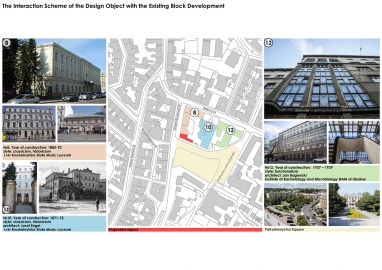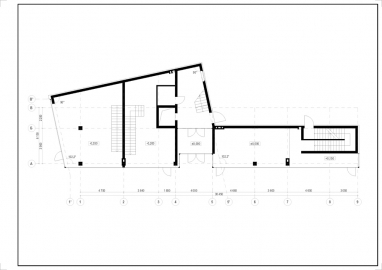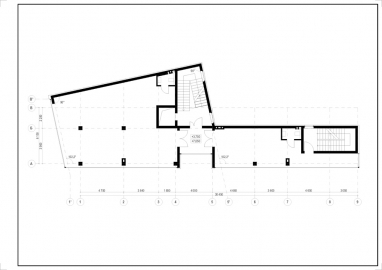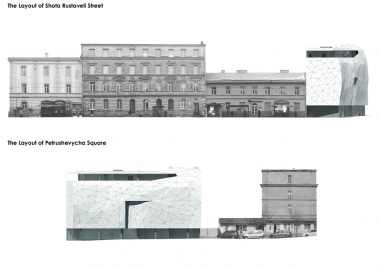Office Center On 5 sq. Petrushevych in Lviv
Lviv has the image of a city of education, culture, sports, tourism and business. The appearance of a new office center continued the trend of business development of the metropolis.
The building has a total area of 1101 sqm 5 floors. The first and underground floors are used as shops and cafes. Starting from the second to the fourth, a flexible model of filling by tenants is used, in general, this is business content. There is a restaurant with a terrace on the top floor. The shape and width of the plot is atypical, it reaches four meters at the narrowest point, which affected the volume of the new building. The site belongs to the consolidated urban fabric with a high density of buildings. It was freed up after the dismantling of small one-story shops, which had no architectural value and dissonant with the surroundings. Neighboring buildings, built in different historical eras starting from the 19th century, successfully form a multifunctional environment. Among them are educational facilities, offices, residential buildings, trade and food establishments.
Creating a multifunctional environment is the development strategy that is recognized as successful according to the "Soft City" concept. We followed the same vector when designing the object, which itself is different in filling. Analyzing the development of the surrounding buildings, we paid attention to the use of different styles that were characteristic of their historical period. In particular, the house at number 12 was built in 1939 in the then progressive style of functionalism, which reflected the time of new thinking in design and construction. Although our object is also actively different from the surrounding buildings, we took care of proportionality with the surroundings, so that the new volume complements the formed architectural area. When forming an architectural image, we set ourselves the goal of energy saving. Therefore, a perforated facade was used, the purpose of which was to prevent overheating given the southern orientation. Air currents move freely in the shaded space under the facade decoration. This technique made it possible to have a fully glazed facade protected from the sun.
The structure of the building is a reinforced concrete frame standing on a pile foundation. The main staircase and elevator provide the structure with spatial rigidity. The external walls, tangent to the neighboring houses, as well as internal partitions are filled with ceramic bricks. The two main facades are fully glazed and additionally decorated with hinged structures made of a spatial aluminum frame with perforated HPL panels. The glass structures open, which makes it possible to service the hinged facade from the inside. The restaurant premises on the last floor are covered with large ledges of a flat roof and seem to cut through the "shell" of the hinged facades.

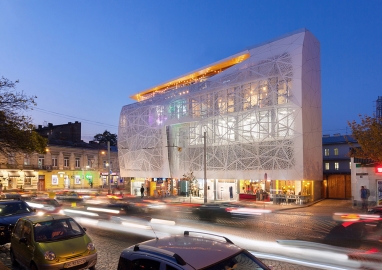 © Serhiy Babenchuk
© Serhiy Babenchuk
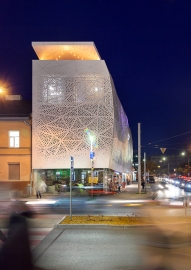 © Serhiy Babenchuk
© Serhiy Babenchuk
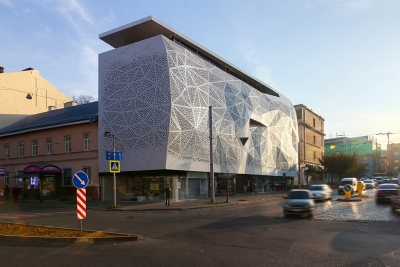 © Serhiy Babenchuk
© Serhiy Babenchuk
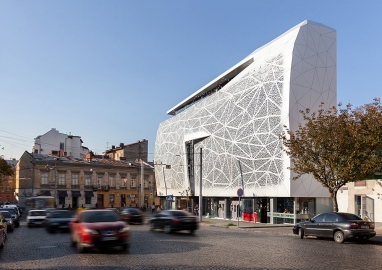 © Serhiy Babenchuk
© Serhiy Babenchuk
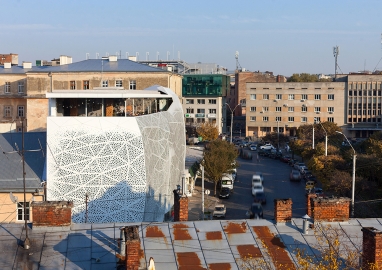 © Serhiy Babenchuk
© Serhiy Babenchuk
